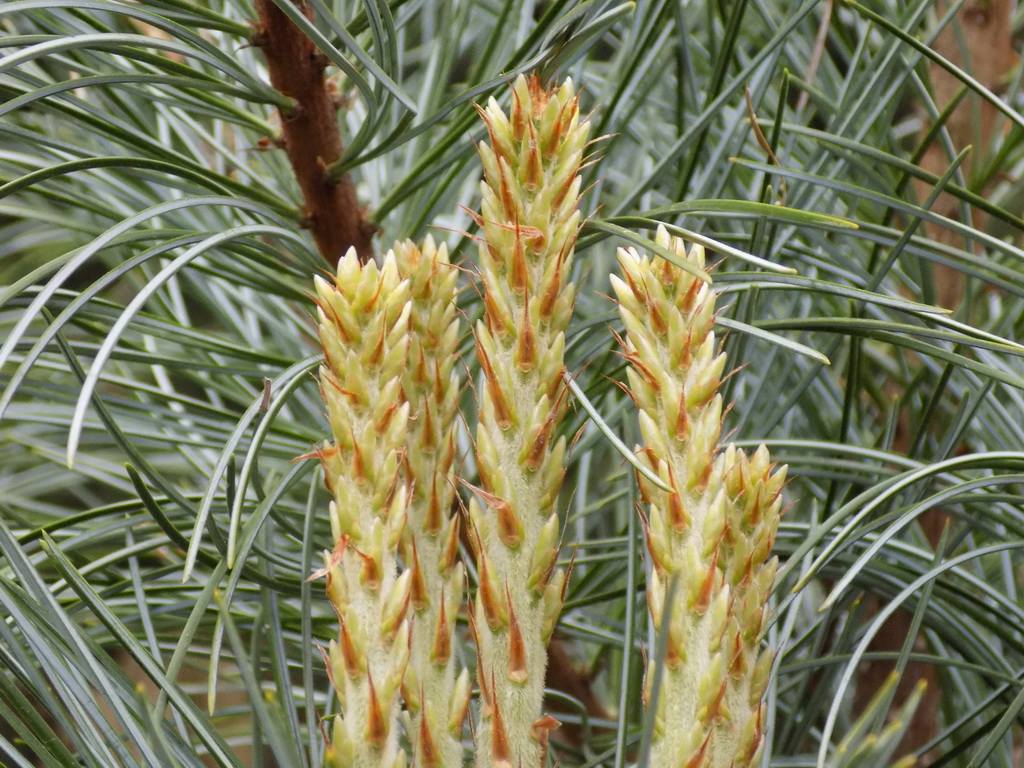Cultivars of Conifers
Over the past 200 years, and at a varying but generally accelerating pace, thousands of cultivars, representing about a quarter of the world’s conifer species, have been selected both from the wild and in cultivation. In more recent times, perhaps 3,000 cultivars have been more or less available, more than five times as many as the total number of conifer species and averaging about 20 for each of the species from which they were selected.
This average is made up of many species with just one or a handful of available cultivars and a few species with hundreds each, notably Juniperus chinensis (with its hybrid Juniperus x pfitzeriana), Picea abies, Taxus baccata (with its hybrid Taxus x media), Thuja occidentalis, Tsuga Canadensis, and there of the species of Chamaecyparis (Chamaecyparis lawsoniana, Chamaecyparis obtuse, and Chamaecyparis pisifera).
Because of its complete worldwide coverage of conifer species, this article had no room left for extensive listing and descriptions of cultivars. Among the conifers, virtually all cultivars are vegetatively propagated selections that therefore maintain the distinctive characteristics for which they were selected.
Overall, cultivar selection all across the conifers has favored primarily variations in habit (especially dwarfing, narrowly upright spires, weepers, and spreaders), foliage color (especially intense blues and yellows and variegated foliage), and, to a somewhat lesser extent, needle length (usually shorter) and foliage from (especially persistent juvenility and threadlike foliage).
Because of the large number of slow-growing and dwarf conifer cultivars in commerce, cultivars will be, on average, smaller than plants of the same species in the wild at a comparable age. Cultivars selected for reproductive features, like early or prolific seed cone production and striking colors of immature seed cones, make up a minute fraction of all available cultivars.
The amazing array of cultivars available from local garden centers or from specialist nurseries were selected both from natural populations and from trees in cultivation. Although far from the most common source of novelties, individual wild trees displaying distinctive characteristics have yielded cultivars in several genera. Far more common is propagation from the witches-brooms (densely bunched twigs) that appear as dark balls of unusual growth in the crowns of wild trees of many species.

Some enthusiasts have made a career out of collecting and naming these (often diseased) dwarfs. Most dwarf and slow-growing conifer cultivars, however, were derived by careful inspection of the seedlings grown from large seed lots. Many foliage color variants were also spotted in seed lots, but such color variants have also been derived from sports (or somatic mutations) at the branch tips of other cultivars. Finally, a number of spreading cultivars were derived from cuttings of horizontal branches, which in some species fail to make a leader with upright growth.
It is important to note that some branches of these cultivars, as well as ones derived by the preceding processes, such as dwarf Alberta spruce (Picea glauca ‘Conica’) or many variegated cultivars, may revert to the normal growth from or foliage color characteristic of the species in the wild. Such reversions should be cut out in order to preserve the distinctive characteristics of the cultivar.
In broad general terms, a cultivar is likely to be a little fussier about garden conditions than unselected individuals of the same species. This is especially true for color variants, which may, depending on the cultivar, either require full sun to bring out the richest color or, contrarily, require protection from sun so that they do not get sunburned and produce browned and drying foliage. Growth rates are also important since even the slowest-growing cultivars still grow throughout their life, as plants must. People will often buy a dwarf conifer and place it in the garden without full attention to how large it will become in 5, 10, or 20 years.
While most conifers readily tolerate light pruning during shoot growth, only a few – yews (Taxus) and northern white cedar (Thuja occidentalis), for instance, both of which make good hedge plants for this reason–tolerate the heavy pruning into old wood that would be required to shrink back a dwarf that has outgrown its site. For this and other reasons, it is more important to inquire about the site requirements of a potential cultivar purchase than of a species in its unselected from, for which the and ecological information in Conifers Garden Encyclopedia can serve as some guide to appropriate conditions in the garden.
Links:
specialist nurseries
https://conifersgarden.com
Conifers Garden Encyclopedia
https://conifersgarden.com/encyclopedia

